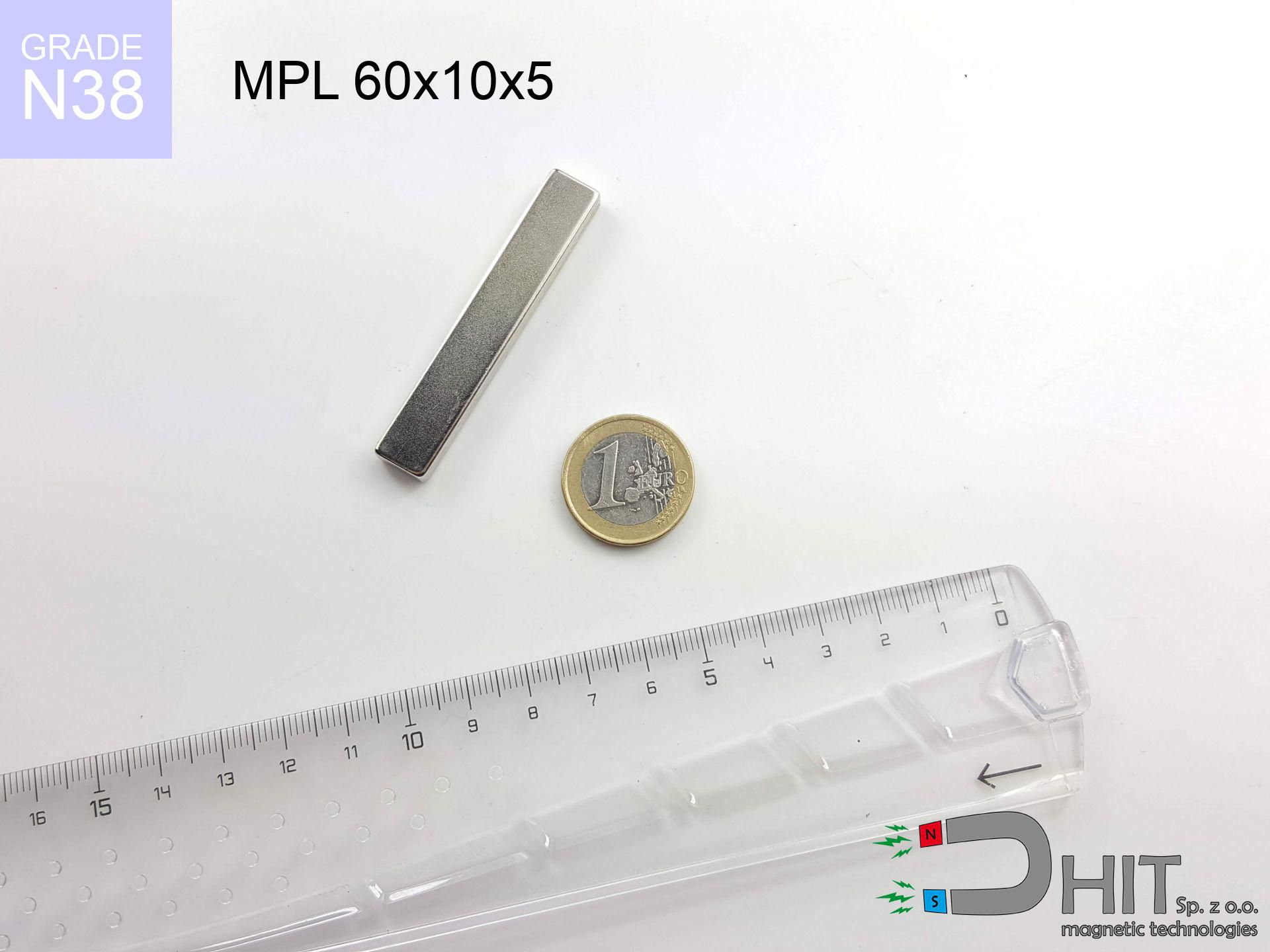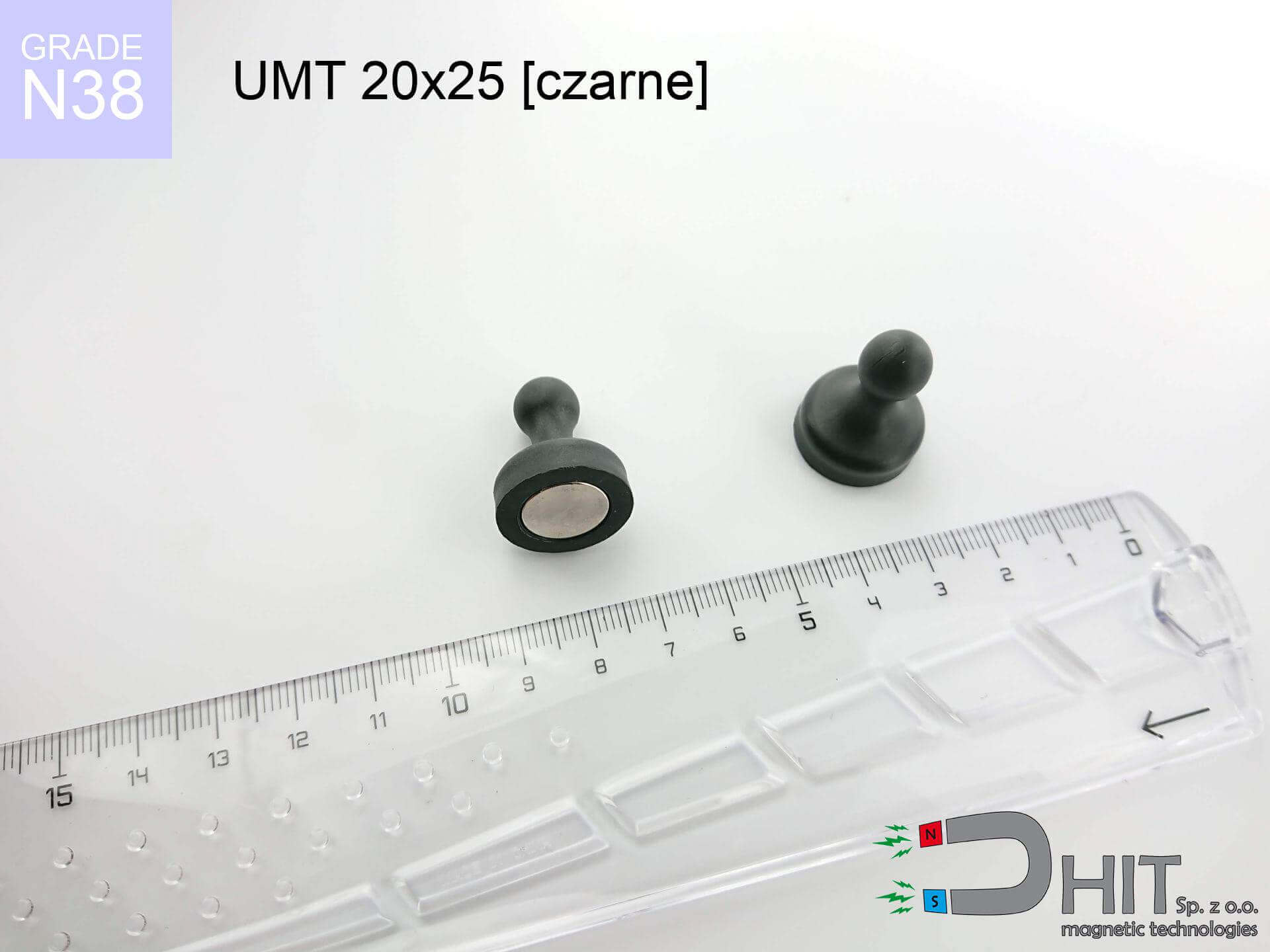SMZR 25x125 / N52 - magnetic roller
magnetic separator with handle
catalog number 140233
GTIN: 5906301813415
diameter Ø
25 mm [±0,1 mm]
height
125 mm [±0,1 mm]
max. temperature
≤ 80 °C
369.00 ZŁ gross price (including VAT) / pcs +
300.00 ZŁ net price + 23% VAT / pcs
bulk discounts:
need more quantity?Don't know what to choose?
Give us a call tel: +48 888 99 98 98 or contact us through contact form on our website. You can check the strength and the shape of neodymium magnets in our power calculator magnetic calculator
Orders placed by 2:00 PM will be shipped on the same business day.
Specification: magnetic separator with handle 25x125 / N52
Magnetic properties of the material N52
Physical properties of sintered neodymium magnets Nd2Fe14B
Recommended articles for purchase
Advantages as well as disadvantages of neodymium magnets NdFeB.
Apart from immense power, neodymium magnets have the following advantages:
- They do not lose power over time - after approximately 10 years, their power decreases by only ~1% (theoretically),
- They are highly resistant to demagnetization by external magnetic sources,
- By applying a shiny coating of nickel, gold, or silver, the element gains an aesthetic appearance,
- They have very high magnetic induction on the surface of the magnet,
- By using an appropriate combination of materials, they can achieve significant thermal resistance, allowing them to operate at temperatures up to 230°C and above...
- Due to the option of accurate forming and adaptation to individual needs – neodymium magnets can be produced in various forms and dimensions, which enhances their versatility in applications.
- Key role in the industry of new technologies – find application in computer drives, electric motors, medical devices or other advanced devices.
Disadvantages of neodymium magnets:
- They are prone to breaking as they are fragile when subjected to a strong impact. If the magnets are exposed to impacts, we recommend using magnets in a steel housing. The steel housing in the form of a holder protects the magnet from impacts and simultaneously increases its overall strength,
- Magnets lose their strength due to exposure to high temperatures. In most cases, when the temperature exceeds 80°C, these magnets experience permanent reduction in strength (although it is worth noting that this is dependent on the shape and size of the magnet). To avoid this problem, we offer special magnets marked with the [AH] symbol, which exhibit high temperature resistance. They can operate even at temperatures as high as 230°C or more,
- Due to their susceptibility to corrosion in a humid environment, we suggest using waterproof magnets made of rubber, plastic, or other moisture-resistant materials when using them outdoors,
- The use of a cover or a magnetic holder is recommended due to the limited possibilities of manufacturing threads or complex shapes in the magnet
- Possible danger arising from small pieces of magnets are risky, when accidentally ingested, which is crucial in the aspect of protecting young children. Furthermore, small elements of these products can be problematic in medical diagnosis in case of swallowing.
Handle Neodymium Magnets Carefully
Keep neodymium magnets away from people with pacemakers.
Neodymium magnets produce strong magnetic fields that can interfere with the operation of a heart pacemaker. However, if the magnetic field does not affect the device, it can damage its components or deactivate the device when it is in a magnetic field.
Magnets will attract to each other, so remember not to allow them to pinch together without control or place your fingers in their path.
If have a finger between or on the path of attracting magnets, there may be a serious cut or a fracture.
Neodymium magnets are the most powerful magnets ever invented. Their power can surprise you.
Read the information on our website on how to properly utilize neodymium magnets and avoid significant harm to your body and unintentional disruption to the magnets.
Dust and powder from neodymium magnets are flammable.
Do not attempt to drill into neodymium magnets. Mechanical processing is also not recommended. If the magnet is crushed into fine powder or dust, it becomes highly flammable.
Neodymium magnets can become demagnetized at high temperatures.
Whilst Neodymium magnets can demagnetize at high temperatures, it's important to note that the extent of this effect can vary based on factors such as the magnet's material, shape, and intended application.
Do not give neodymium magnets to children.
Neodymium magnets are not toys. Be cautious and make sure no child plays with them. Small magnets can pose a serious choking hazard. If multiple magnets are swallowed, they can attract to each other through the intestinal walls, causing significant injuries, and even death.
Under no circumstances should neodymium magnets be placed near a computer HDD, TV, and wallet.
The strong magnetic field generated by neodymium magnets can destroy magnetic media such as floppy disks, video tapes, HDDs, credit cards, magnetic ID cards, cassette tapes, etc. devices. They can also destroy devices like video players, televisions, CRT computer monitors. Do not forget to keep neodymium magnets at a safe distance from these electronic devices.
Neodymium magnetic are incredibly delicate, they easily break as well as can become damaged.
In the event of a collision between two neodymium magnets, it can result in them getting chipped. They are coated with a shiny nickel plating similar to steel, but they are not as hard. In the case of a collision between two magnets, there can be a scattering of small sharp metal fragments in different directions. Protecting your eyes is essential.
Under no circumstances should neodymium magnets be brought close to GPS and smartphones.
Intense magnetic fields generated by neodymium magnets interfere with compasses and magnetometers used in navigation, as well as internal compasses of smartphones and GPS devices.
The magnet is coated with nickel. Therefore, exercise caution if you have an allergy.
Studies show a small percentage of people have allergies to certain metals, including nickel. An allergic reaction often manifests as skin redness and rash. If you have a nickel allergy, try wearing gloves or avoid direct contact with nickel-plated neodymium magnets.
In order to illustrate why neodymium magnets are so dangerous, see the article - How dangerous are very strong neodymium magnets?.


![search holder 107x40 [M8+M10] GW F400 Lina / N38 search holder 107x40 [M8+M10] GW F400 Lina / N38](https://cdn3.dhit.pl/graphics/products/ump-107x40-m8+m10-gw-f400-+lina-bel.jpg)




